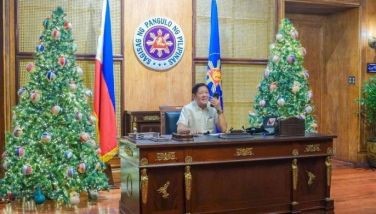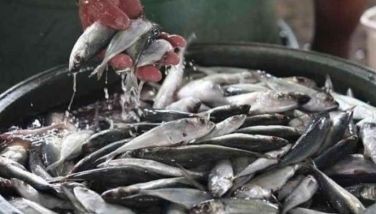‘US-DOST partnership to fast-track big projects’
MANILA, Philippines - Department of Science and Technology (DOST) Secretary Mario Montejo said that the active partnership they have struck with the United States on science and technology collaboration in the fields of climate change and disaster resilience, health research, marine biodiversity and conservation, agriculture and food security and “improving science” was seen to fast-track the rollout and development of their various ambitious big-ticket projects.
Montejo said that one of the DOST’s ambitious but high-impact projects that could benefit from shared technical expertise with US scientists was their effort to launch a Filipino-made micro-satellite into space by 2016 to level up the DOST’s Projects NOAH (Nationwide Operational Assessment of Hazards) and DREAM (Disaster Risk Exposure Assessment for Mitigation), which has already built up LiDAR (Light Detection and ranging) capability enabling the DOST to provide high-resolution, three-dimension multi-hazard maps to aid in disaster preparedness.
The micro-satellite project is a component in the overall program of DOST to build a capability for remote sensing wherein the micro-satellite can gather images and data from space as it orbits over the Philippines and beam all the data to a remote sensor in the ground. The DOST can then process all the data in their Intelligent Operations Center in the National Computer Center in UP Diliman, Quezon City, which is equipped with an IBM Blue Gene Supercomputer donated by IBM.
The DREAM project’s successful LiDAR mapping technology capacity building effort bagged the Geospatial World Excellence in Policy Implementation Award for 2014 in Geneva, Switzerland last May.
“We will greatly benefit from the shared know-how from US hi-tech expertise since these shared expertise can speed up the learning curve that our scientists have to go through as they develop the different projects we are pursuing in the DOST,” Montejo told S&T reporters in a lunch briefing in Quezon City yesterday.
“For their part, our US counterparts will also learn from watching us in our capacity building, and the wealth of data and information that will be gathered in the different projects,” he added.
Scientists and policymakers of the Philippines and the US have come up with concrete action plans to pursue in the coming months and years in S&T research and development collaboration at the end of the two-day 1st Philippine-US Joint Science and Technology Committee Meeting held at the Diamond Hotel Manila that wrapped up Tuesday afternoon.
American counterparts of the country’s scientists and policymakers have committed to help in the capacity building of local scientists and researchers to pursue R&D on various areas of interest such as climate change, marine biodiversity and ocean acidification, and even in formulating the regulatory framework on stem cell treatment in one year, as well as two-year action plans drawn up during the two-day meeting.
Montejo hailed the successful holding of the 1st JCM, saying the Philippines can learn a lot from their counterparts in the US, who he said were indisputably the global leader in innovation.
- Latest
- Trending






























